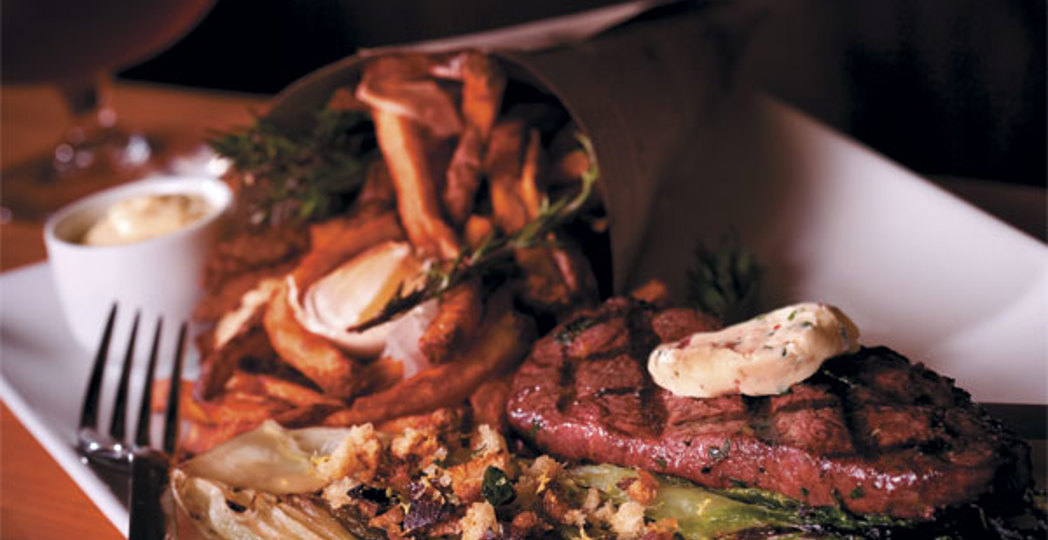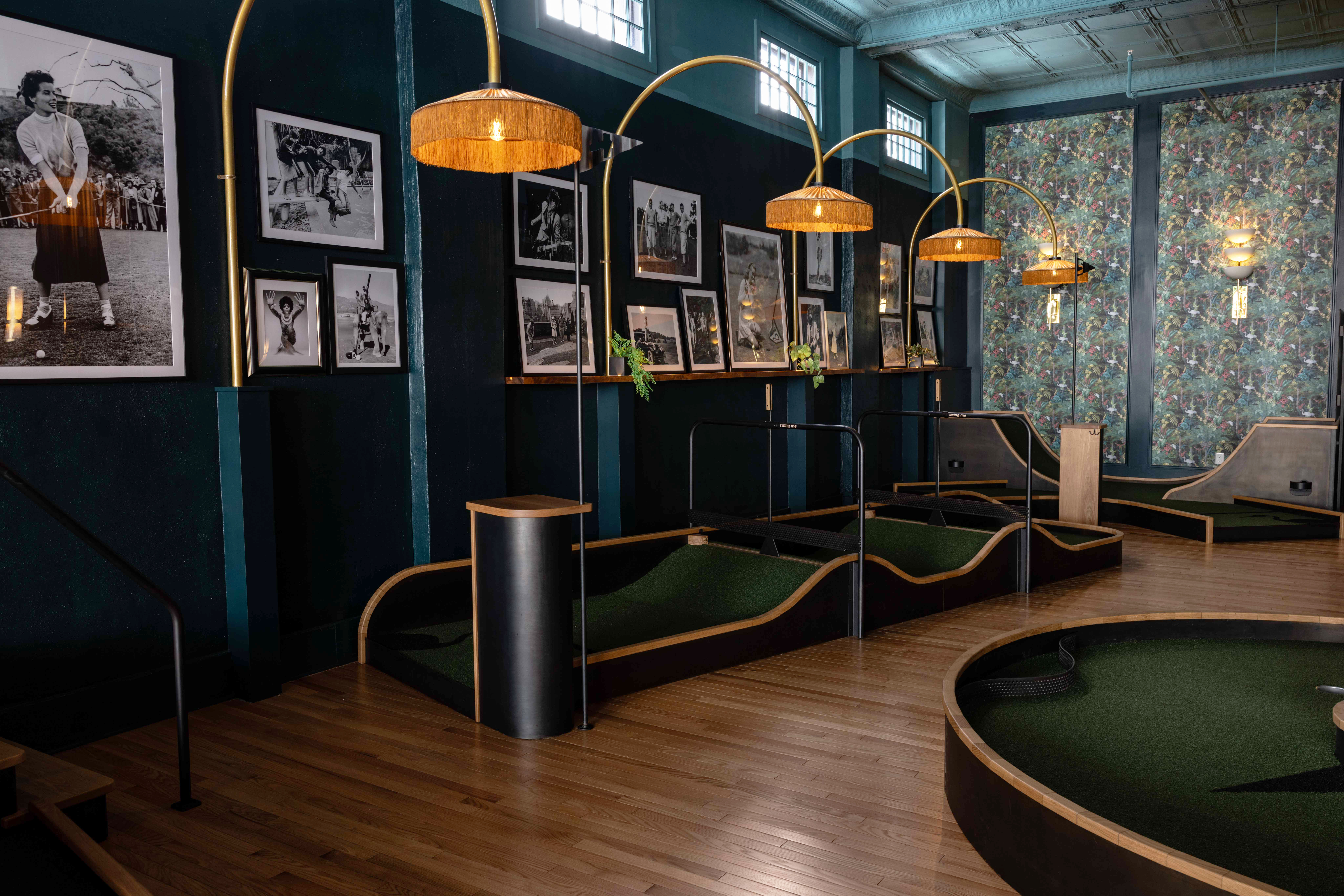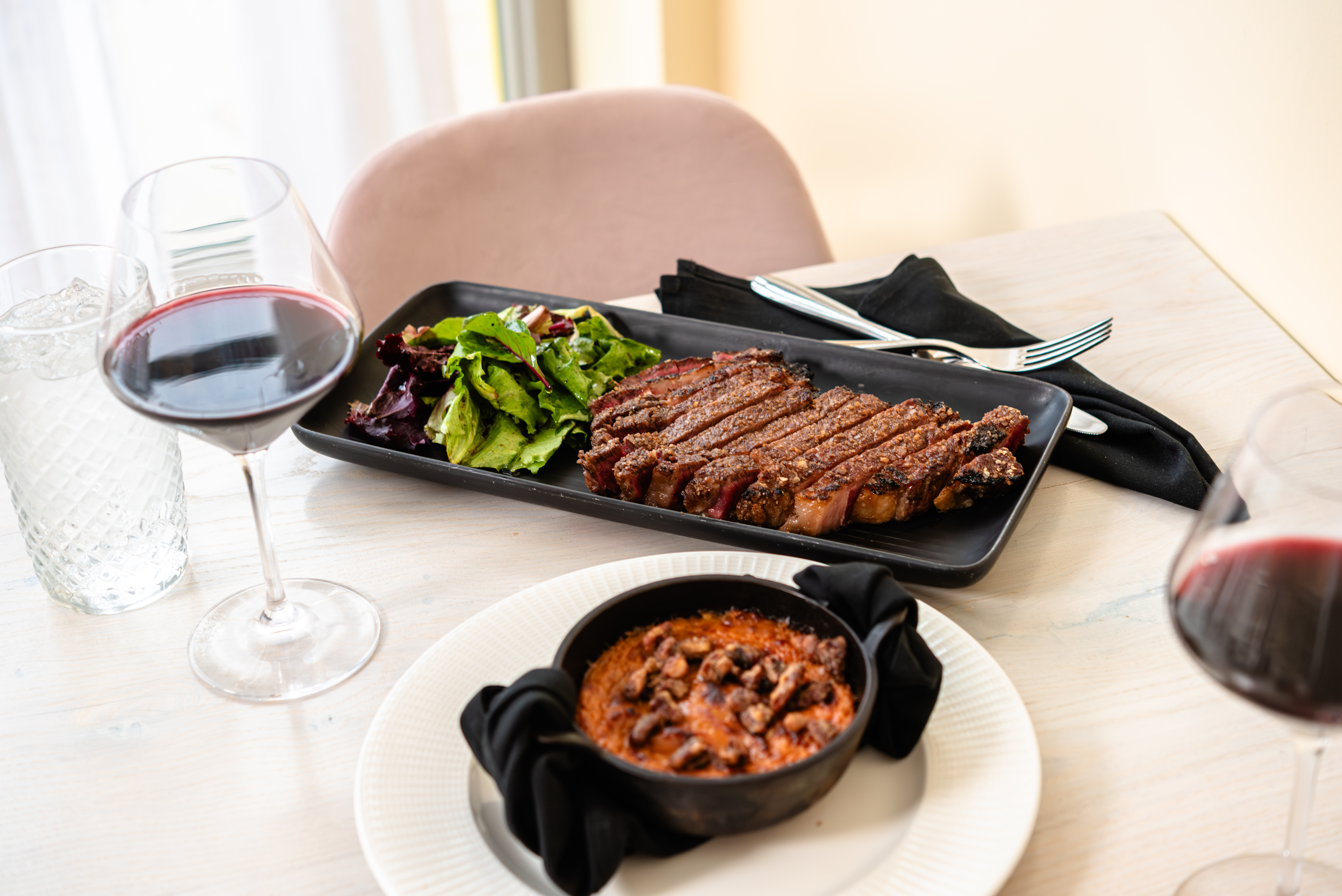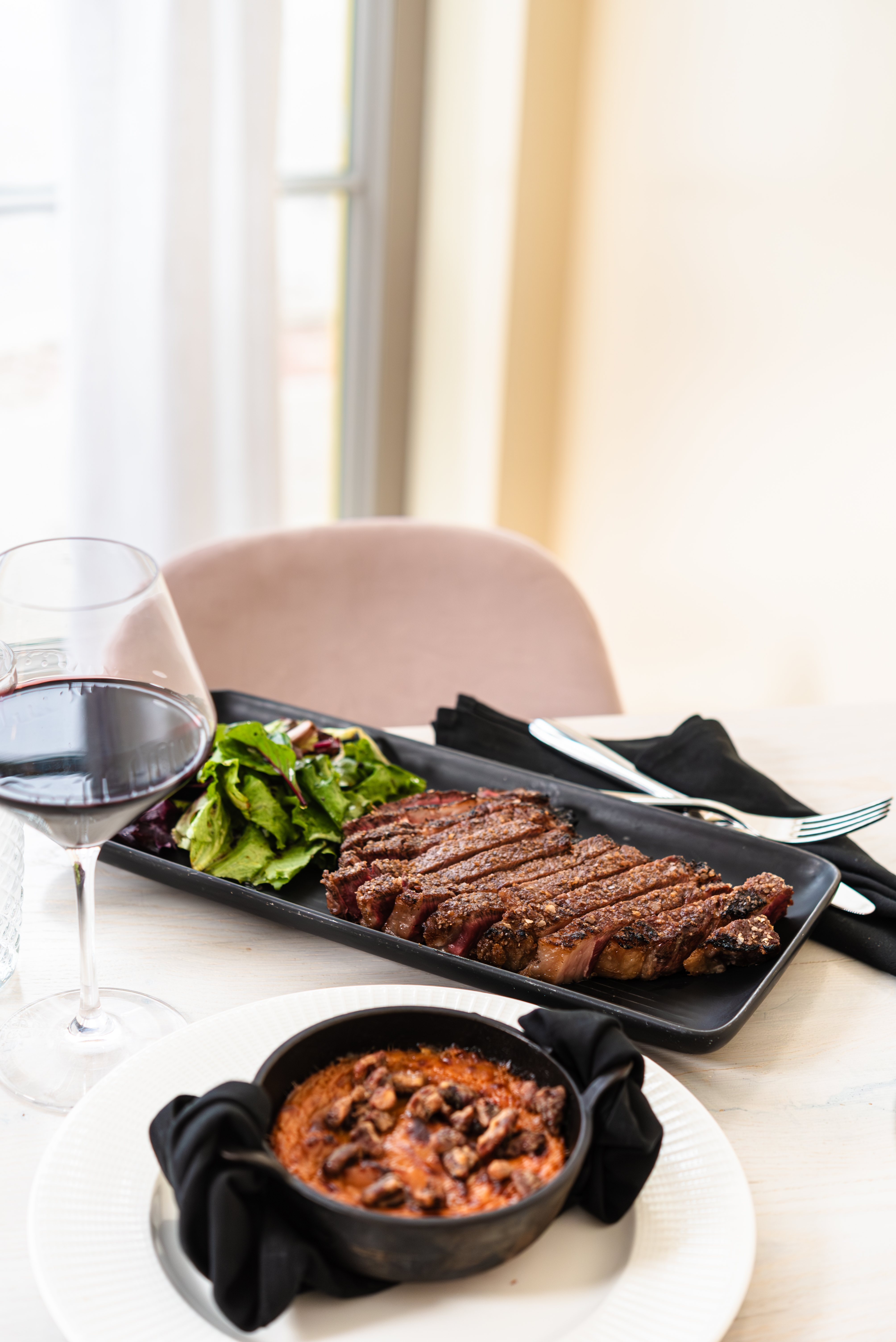Green Scene: Greenhouse Tavern
by Laura Taxel | Aug. 18, 2009 | 4:00 AM

Foodies, treehuggers and bar-goers who got a brief glimpse of what Sawyer can do with a few fried potatoes and Margherita-style pizza at Bar Cento all breathed a collective, “Finally!” when Greenhouse Tavern opened this spring. They were excited not only for his French bistro cuisine, but also for the culture he promised to create — one where the food, drink and décor would live in harmonious, sustainable union.
The historic Cort Building on East Fourth Street was renovated using recycled materials. Food comes from Ohio farms and artisan ingredients. And the bar is stocked with vodka and bourbon from earth-friendly distilleries.
This is significant, considering no restaurant in Ohio had achieved what Sawyer has — becoming the first LEED-certified restaurant in the state. It’s a designation he earned soon after opening, and one that puts Sawyer and his crew, chef-partner Jonathan Seeholzer and beverage director Everest Curley, at the forefront of Cleveland’s eat local movement. But even more, all of this atmosphere is accompanied by a good meal at a good price.
The experience begins with a few slices of bread and a little crock of pork rillette — tender, shredded bits of slow-cooked meat with the consistency of paté — on the house. It’s just the thing to take the edge off while perusing the options, organized as Firsts, Seconds, Thirds and Halfs.
The designations are loosely linked to traditional courses and portion sizes but allow for free-form grazing. So in the spirit of the menu, I’ll rave about the dishes I loved (which includes everything I ate).
A big bowl of plump, saffron-steamed mussels with fennel was like a bivalve bouillabaisse ($8). The broth had an intriguing, earthy complexity with a touch of caramel to it, courtesy of a rouille containing aged and fermented black garlic.
Tomcod ($19) is another excellent seafood preparation. Braising turns the flesh silky, and the liquid flavored with black olives, orange zest and Chablis becomes the sauce for the accompanying Parisian gnocchi. Unlike the Italian version, which uses potatoes, these dumplings start with a pastry dough that’s blanched then sautéed.
Although common in Europe, beef tartare ($9) rarely shows up on local tables and generally provokes squeals of squeamishness when it does. That didn’t stop Sawyer, and he’s astonished by how well it’s selling. His presentation — featuring fresh, hand-ground, certified Ohio beef; a cold, steam-poached egg and cornichon relish — is the best I’ve had in this country.
Steak and pomme frites ($19) provide more meat-and-potatoes familiarity. The dish brings back the addictive duck fat-fried potatoes renowned from Sawyer’s first restaurant. It’s a welcome carryover.
The less than two years he spent at Bar Cento can easily be credited with transforming the Cleveland native from the chef who helped Michael Symon open restaurants to the city’s next big culinary name.
The pomme frites (still spilling out of a paper cone) are served with aioli plus three fine house-made vinegars — red wine, Belgian beer and 15-year-old Chablis —as stand-ins for ketchup. But the real star of the plate is the grilled romaine splashed with lemon and olive oil, also available on its own ($4). It’s a wonder that something so simple can taste so terrific.
But that’s the trend on the menu. It’s full of items that rely on a profound understanding of food rather than complicated cookery — evident in a side of mushrooms with poached egg and swiss chard ($6) topped with house-made fromage blanc. The same holds true for the grilled chicken from Tea Hills Farm in Loudonville with natural jus ($18). Because it hits the fire only when ordered, there’s a bit of a wait, but the moist breast presented with ratatouille and herb salad is worth it.
Crispy chicken wings ($11) are one of the few items that veer from the French theme, prepared with scallions, garlic and roasted jalapenos with just a hint of heat.
Take note: The menu is a single page and tightly focused, and the same core ingredients show up in multiple preparations. But it changes frequently. Unless you eat here almost daily (not a bad idea), there is sufficient variety and a few surprises.
Desserts are the handiwork of pastry chef Keri Garcia. They’re executed with as much finesse as the rest of the food and worth the indulgence. I was particularly impressed with a rustic plum tart topped with cognac cream ($6) and what thyme-infused caramel did to ginger-apricot clafouti ($6).
Curley’s wine list offers value and excitement. Glass pours are mostly French, and house wines are far from the usual: Grenache Blanc from Domaine de Montrabech is a rarely encountered white (2006, $6), and Les Ramieres’ Grenache Rouge is its red counterpart (2007, $6). The bar crafts some outstanding cocktails, among them a zesty Dark and Stormy ($7) and a Rye Sour that is fruity but not sweet ($10).
Up-and-coming designer Jonathan Sin-Jin Satayathum is largely responsible for the reclaimed chic of the interior space. There’s seating on two balconies overlooking the ground-floor bar and main dining area, a communal table in the basement adjacent to the open kitchen and a rooftop deck yet to come. A patio out front puts guests in the thick of the entertainment district’s action.
The Greenhouse Tavern will attract those passionate about sustainability. Repurposed wood, solar-powered faucets and locally raised tomatoes may raise the eco-consciousness of others, but it’s the exceptional, affordable food that ensures the future of this place.
The Greenhouse Tavern, 2038 E. Fourth St., (216) 443-0511. Dinner Mon-Sat 5 p.m. - 1 a.m., Lunch Mon-Fri 11 a.m. -2 p.m. & weekday happy hour 2 - 5 p.m., thegreenhousetavern.com .
Trending
-
1
-
2
-
3
-
4
-
5










